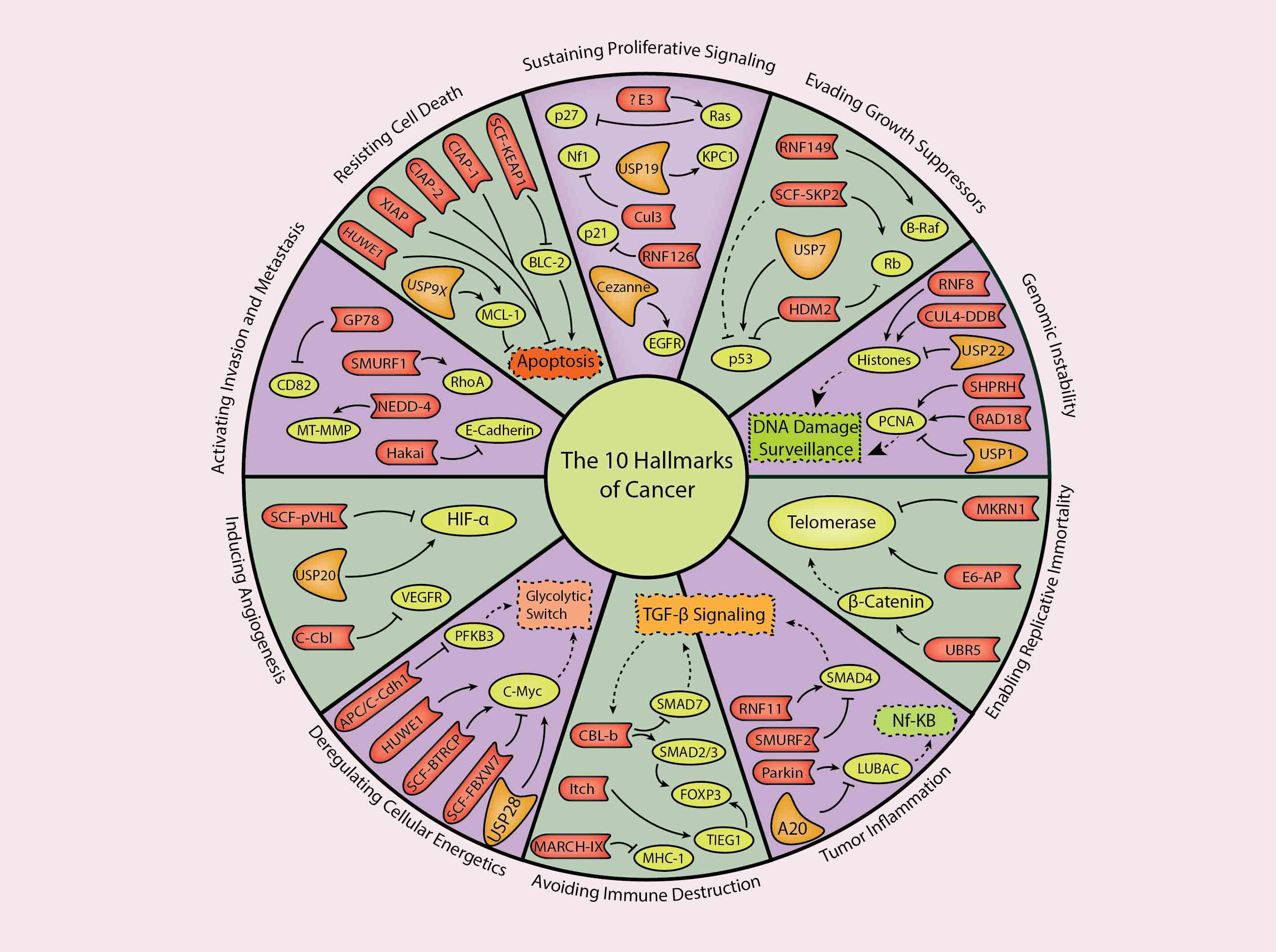Protein homeostasis at the cellular level is precisely balanced by de-novo synthesis, posttranslational modifications, and proteolytic degradation. Protein degradation serves several functions including the elimination of damaged and no longer needed proteins, activation of protein precursors by partial hydrolysis, or the complete hydrolysis of proteins that regulate multiple functions. The majority (>80%) of all mammalian proteins are degraded by the ubiquitin-proteasome-system (UPS). Over the past decade, knowledge about the UPS has exploded. It has now become obvious that the ubiquitination of proteins does not solely target them for degradation, but can also play a role in regulatory functions including translational regulation, activation of transcription factors and kinases, DNA repair, endocystosis, and vesicular transport of membrane proteins1.
Ubiquitin Conjugation & Deconjugation
The ubiquitin conjugation system is hierarchically structured in three distinct classes of enzymes; i) ubiquitin activating enzyme (E1), ii) ubiquitin conjugating enzyme (E2), and iii) ubiquitin ligases (E3). Only one E1 ubiquitin-activating enzyme exists highlighting its essential function. E2 conjugating enzymes are more abundant with about 35-40 discovered and characterized to date. E3 ligases represent the largest class of enzymes to date with more then 700 annotated. These enzymes have very strong implications in cancer and neurodegenerative diseases. Deconjugating enzymes (DUBs) catalyze the deconjugation of ubiquitin from substrate proteins. This reverses the conjugation cascade, affecting critical events in the cell proteome such as protein degradation through the proteasome. To date, more then 100 DUBs have been annotated, and many studies have shown their multiple functions in human disease2.
Current Ubiquitin Proteasome Landscape

Current ubiquitin conjugation assays are primarily gel-based. Gel based assays are time consuming, low-throughput, and expensive. The need for new high-throughput tools to detect Ub conjugation in real-time has outpaced available assay tool-kits and stifled pre-clinical drug development3. Specifically, the lack of homogeneous real-time TR-FRET conjugation assays has hampered studies on E3 ubiquitin ligases (several hundred targets), and ubiquitination studies on proteins-of-interest such as p533. South Bay Bio eliminates this tool-kit bottleneck.
References
1) Chen, Zhijian J., and Lijun J. Sun. "Nonproteolytic functions of ubiquitin in cell signaling." Molecular
cell 33.3 (2009): 275-286.
2) Varshavsky, Alexander. "The ubiquitin system, an immense realm." Annual review of biochemistry 81 (2012):
167-176.
3) Degorce, François, et al. "HTRF: a technology tailored for drug discovery–a review of theoretical aspects and
recent applications." Current chemical genomics 3 (2009): 22.

